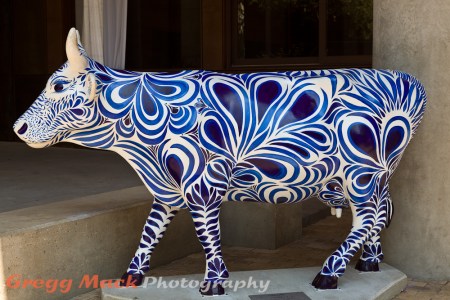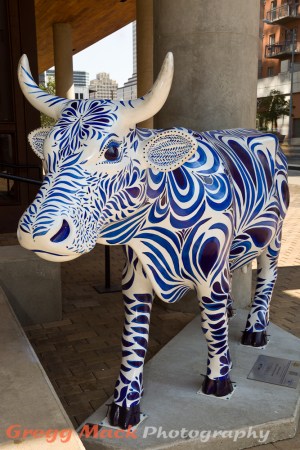 On May 1st, I went down to Precision Camera here in Austin and ordered one of the new Olympus OM-D E-M5 Micro Four-Thirds cameras (in silver and black) with the 12-50mm f/3.5-6.3 “kit” lens. I also ordered 3 prime lenses to round out the system. They were the Olympus 25mm f/1.4, the Panasonic Leica 25mm f/1.4, and the Olympus 45mm f/1.8 lenses.
On May 1st, I went down to Precision Camera here in Austin and ordered one of the new Olympus OM-D E-M5 Micro Four-Thirds cameras (in silver and black) with the 12-50mm f/3.5-6.3 “kit” lens. I also ordered 3 prime lenses to round out the system. They were the Olympus 25mm f/1.4, the Panasonic Leica 25mm f/1.4, and the Olympus 45mm f/1.8 lenses.
Since the Micro Four-Thirds cameras have a 2x sensor magnification from that of a full-frame 35mm camera, the 12-50mm kit lens would be the equivalent of a 24-100mm lens on a full-frame 35mm camera. The 3 prime lenses would perform like 24m, 50mm, and 90mm equivalents.
On Wednesday May 23rd, everything came in, except for the Panasonic Leica 25mm f/1.4 lens. We were leaving for a week of vacation on Sunday May 27th, and I had pretty much come to grips that we would be taking the old Canon camera 5D Mk II on this week long trip to Ruidoso, New Mexico.
By getting a brand new camera “system” just days before a week-long vacation didn’t give me much time to learn how to use it – but I was going to “learn it as I went”. On Saturday morning, less than 24 hours before we were going to leave, I decided that I would take my new camera with me on my usual Neighborhood Walk. I’ve been walking this same route up to 4 times a week for over 11 years now, and I had never taken a camera with me before. The journey always starts right here at my front door.
Helpful Hint: You can always view any photo at a larger size by just clicking on it. You will then need to use your browser’s “Back Button” to return to my story.
I was in my walking shoes and shorts, and I was planning on getting somewhat sweaty, so there was no way I was going to bring along a camera bag. No, I was going to have to travel light – really light.
So, before I left the house, I put the 45mm f/1.8 lens on the camera. I did not even have a lens hood – they are not in stock anywhere right now. I did have a B+W UV Haze filter on the lens. Even so, I knew that I was going to have to be careful about the direction that I pointed the lens, with respect to the angle to the sun, to prevent unwanted lens flare.
In the 3 short evenings that I had practiced with the camera in the house, I had left it in the default setting of “Auto ISO”. I had also read several reviewers on the internet say that the high ISO sensitivity of this camera was good at least all the way up to 6400, so I set that as the upper limit that the camera would use for Auto ISO. However, when I looked at those practice photos on my computer monitor, I was pretty displeased. This new Olympus OM-D E-M5 was a huge improvement over my Canon PowerShot G-12, but it wasn’t perfect, either. I would say that the Olympus at ISO 6400 looked about as speckled as the G-12 does at ISO 1000.
For this walk, I set the ISO to 200 and left it there. If I needed more light, I was going to use the “business end” of the aperture settings that this 45mm f/1.8 lens was capable of – i.e. f/1.8 – and would also allow me to se how well it performed with narrow depth of field situations such as this:
Normally this 3 mile walk through my hilly neighborhood takes me anywhere between 47 and 49 minutes. Due to my stopping and taking photos of anything that looked interesting to me, on this day it took more than an additional 30 minutes more.
It was mainly overcast early in the walk, but the longer I was out, the more the sun would shine through the clouds. Photos of plants simply do not look good when taken in direct sunlight. As a result, I past by many interesting photo opportunities while the sun was out, and had to move quickly to capture what I could when the sun was behind a cloud.
This next photo was taken while the sun was out, but it was on the shady side of the Magnolia tree. On my first shot of this blossom, it was pretty well underexposed. Camera meters get fooled by scenes that vary significantly from an average brightness. The white petals on this blossom were supposed to be white, and not gray, so I simply set the Exposure Compensation to +1.0 and took this photo.
Now I had to turn and walk up my longest (not my steepest) hill. Along the way, I noticed how well the yards were looking, as compared to this time last year, when Austin was in a terrible drought.
At the top of the hill, the sun went behind some heavy clouds, but I still had plenty of light to shoot with. The next shot with the two cacti was taken with a shutter speed of 1/2000 of a second. The aperture wasn’t wide open, but even at f/3.2 – and on a Micro Four-Thirds camera – it did a very nice job of blurring the cactus in the background.
So I was just walking along shooting when the clouds were helping me out.
There is a style of photography known as “Street Shooting” where the photographer is simply out on the street, taking photos of interesting architectural features of buildings, and usually more important than that, they are attempting to photograph people candidly, in their daily life – and with their natural facial expressions (not a posed, fake smile).
There are some really good photographers who do this and are also “bloggers on the internet”. Robin Wong and Kirk Tuck are two of the 3 blogs that I read on a regular basis.
I learn a lot from reading what they, and Libby over at Ohno Studios put in their blogs. I like them, because they aren’t trying to sell me something. (OK, Kirk occasionally reminds his readers about the books that he’s authored.)
Now between those three “internet photographers”, I’ve never once see any of them come close to mentioning the type of “Street Shooting” that I was really enjoying on this Saturday morning. I suppose I still have a lot to learn….
At the base of my steepest 1-block-long hill, I stopped to photograph a few things in this yard before I tackled the hill.
The sun was out most of the time now, but when I saw some movement in my peripheral vision, something instinctively made me raise my camera and get off this one shot just as the doe jumped into a full sprint.
OK, about another block beyond the deer siting, is my second steepest hill, but the good news it is just a few hundred yards from our home.
I could easily tell when the sun was out by observing my own shadow on the sidewalk.
I’m not sure if that qualifies as Street Shooting… it was actually a driveway!
There were only a couple more photo opportunities at the top of the hill.
 I’m almost home now. This the intersection that you turn into Bing Cherry Lane, which is the cul-de-sac that I live on. Our house is to the left of the house on the left in this photo.
I’m almost home now. This the intersection that you turn into Bing Cherry Lane, which is the cul-de-sac that I live on. Our house is to the left of the house on the left in this photo.
Before I end my walk, I have to go to the end of the cul-de-sac and then come back to the house.
The Purple Sage looks great this year, and this was the only time I passed them when the sun wasn’t out.
I don’t think this one is a Purple Sage, but the sun wasn’t blasting it with hard light, so I took this photo.
Before I ended my walk, I wanted to make sure that I had at least one shot where the aperture was wide open at f/1.8 so that I could see how what kind of “bokeh” that this lens would produce on the Micro Four-Thirds sensor in this new Olympus OM-D E-M5.
I was pleased to see that I could achieve this sort of effect – one that I really enjoy producing with my full-frame Canon 5D Mk II.
Well, here’s where my journey ends.
I didn’t get the “exercise benefit” that I always get from this 3 mile walk. Even so, I was very excited when I was done – mainly because I was pretty confident that I could take this new camera on our vacation and still not wish that I had brought my “real camera” with me.
At ISO 200, the images look great to me. I had the camera set to capture both JPG and RAW simultaneously – mainly because Adobe had not officially released the updates to Lightroom 4.1 and Camera Raw 7.1 that I would need to process the RAW files with.
While on vacation in Ruidoso, New Mexico, Adobe did release those updates, and I spent the morning of May 31st going through these photos and putting this post together. In ALL of the photos in this post, the White Balance was left at “As Shot” (the camera was on Auto White Balance). The Exposure, Contrast, Highlights, Shadows, Whites, and Blacks sliders were all left at 0 (zero). ALL of the photo did have the Clarity slider set to +20, the Vibrance slider set to +8, and the Saturation slider set to 0 (zero).
Why the bump in Clarity and Vibrance? Because that’s just the way I post process all of my RAW files, except for portraits of women (where I leave the Clarity slider at 0 (zero) – and then use the Adjustment Brush to reduce the Clarity on just their facial skin to -50).
When I exported the JPG photos that you see here from Lightroom 4.1 they were reduced in size to 1000 pixels along the long edge, which is quite a bit less than the 4608 pixels that the camera captured. This inevitably results in a loss of resolution. Even so, I think you will agree with me that what you see here isn’t too shabby!
My next few posts will be to show some of the photos that I took this week – all of which were taken with my new Olympus OM-D E-M5 camera and the three lenses that I currently have.








































































